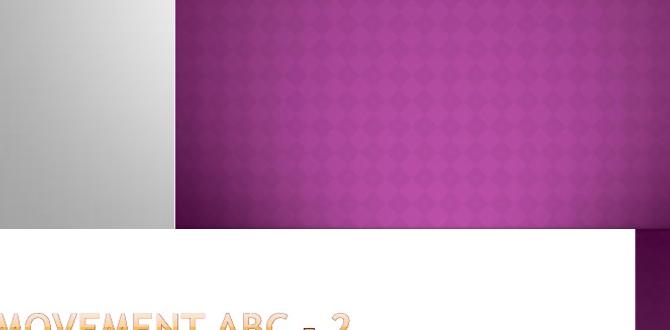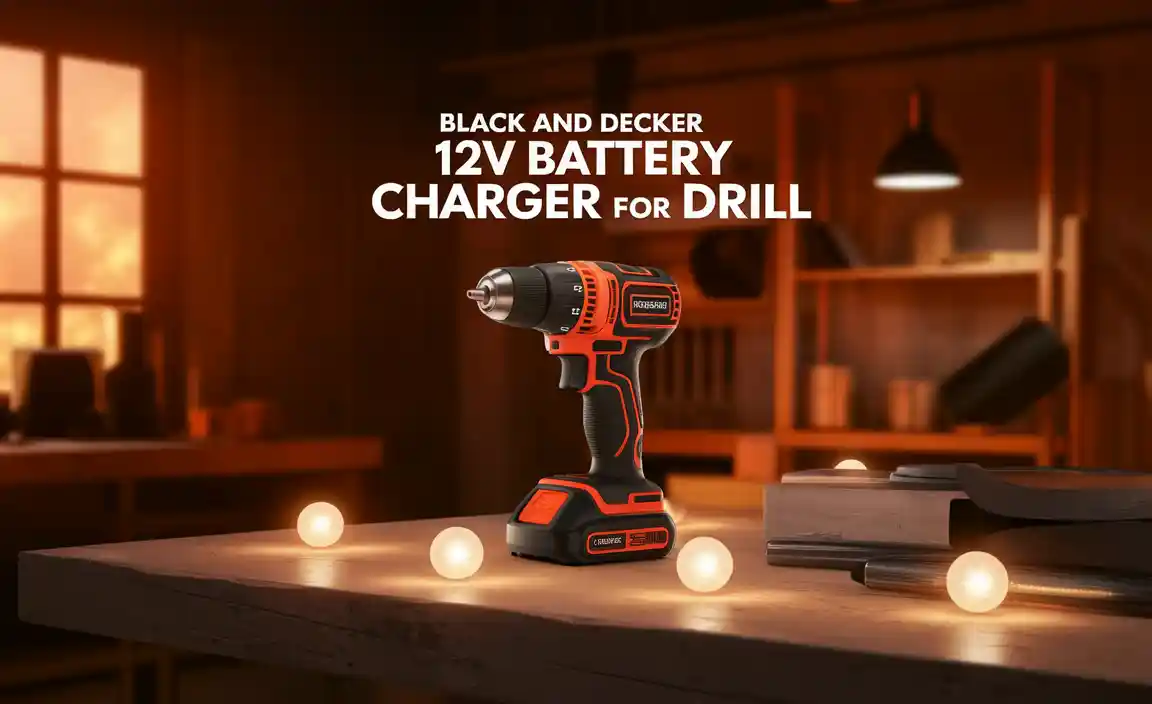Imagine trying to balance on a beam in gym class and almost toppling over. You wonder if everyone else struggles too. Ever been curious about how we move and balance so well? Sometimes, it feels like magic. Movement Assessment Battery for Children might have the key to understanding this magic. This tool helps check how children move and stay balanced.
Picture a little boy trying to tie his shoes. What seems easy for some is a challenge to him. Why does this happen? And how do we help him improve? The Movement Assessment Battery for Children can give us answers. It’s like a detective solving a mystery about movement.
Did you know that children who move well often do better in school? It might sound surprising, but there’s a link. Good movement skills can make learning easier. The Movement Assessment Battery for Children is here to help uncover these amazing connections.
Evaluating The Movement Assessment Battery For Children Movement Assessment Battery For Children Is An Essential Tool For Detecting Motor Skill Difficulties In Children. Often Referred To As Movement Abc, It Offers A Comprehensive Evaluation Framework For Professionals In The Field Of Child Development And Pediatric Neurology. Understanding Movement Abc Developed To Systematically Measure A Child’S Motor Coordination, Movement Abc Assesses Different Areas Such As Manual Dexterity, Aiming And Catching, And Balance. These Tests Are Crucial For Identifying Children Who May Experience Motor Development Challenges, Offering Insights Into Planning Appropriate Interventions. The Structure Of The Movement Abc The Assessment Consists Of Tasks Divided Into Age Bands, Ensuring Age-Appropriate Challenges. Typically, It Evaluates Children From 3 To 16 Years Old. This Structured Approach Allows For Precise Assessment Of Motor Skills At Various Developmental Stages. Why It’S Important Children Exhibiting Motor Difficulties Can Struggle With Everyday Activities And Academic Performance. By Identifying These Issues Early Through Movement Abc, Targeted Strategies Can Be Implemented To Enhance Motor Abilities, Self-Confidence, And Overall Development. Implementing Effective Interventions Upon Detailed Assessment, Movement Abc Allows Educators And Therapists To Devise Effective, Individualized Intervention Plans. These Interventions Are Crucial In Improving The Quality Of Life For Children Facing Motor Challenges, Enabling Smoother Transitions In Educational Settings And Social Environments. Conclusion Incorporating The Movement Assessment Battery For Children Into Routine Evaluations Helps In Early Identification And Management Of Motor Skill Difficulties. By Understanding Its Importance And Application, Professionals Can Significantly Contribute To A Child’S Developmental Journey, Ensuring Holistic Growth And Well-Being.

Understanding the Movement Assessment Battery for Children
Do you know how well children can move? The Movement Assessment Battery for Children helps us find out. It’s like a fun test that checks how kids run, jump, and balance. Why is this important? Well, when children struggle with movement, it can affect their learning and playtime. Imagine trying to keep up with friends when your feet keep tripping! This tool helps teachers and parents understand how to support children better. Isn’t it amazing how small steps can make a big difference in a child’s life?Components of the MABC
Description of the Test Battery Structure. Breakdown of Tasks and Skills Assessed.Imagine a fun puzzle designed to see how well kids move! The Movement Assessment Battery for Children (MABC) is like this cool puzzle. It’s packed with tests to check how kids are doing. These tests are divided into groups, like small tasks to catch a ball or balance on one foot. Each task checks a special skill. It’s like testing different superhero moves! Want to know what skills get tested? Take a look at this cheerful chart:
| Task | Skill Assessed |
|---|---|
| Catching | Coordination |
| Balancing | Stability |
| Running | Agility |
This makes sure every kid knows if they can be the fastest, steadiest, or the best at catching! Remember, it’s all about making every child feel like a champ in their unique way.
Implementation and Administration of the MABC
Protocols for Administering the Test. Guidelines for Scoring and Interpretation.Understanding the Test Protocols
Think of the MABC like a special game. This game checks how children move. When giving the test, follow these steps:
- Set up the area. Make sure there is plenty of space.
- Use the right tools. This might include balls or pencils.
- Encourage children. Make them feel comfortable.
Scoring and Interpretation Made Simple
After the test, we need to look at scores. How do you know what these numbers mean? Here’s how:
- Scores show skills. We look at how well each child did.
- Compare scores. See how a child does compared to others.
- Find areas for improvement. This helps in planning activities.
What age is the MABC test suitable for?
This test suits children aged 3 to 16 years. It helps discover how different age groups move.Why is it important to test movement skills?
Movement skills are key for growing and learning. They help in daily activities, play, and in school.The MABC helps us know how well kids can move. It uses scores to learn where improvement is needed. This lets teachers help kids find fun activities that work on skills. “The more you play, the more you grow!” Follow these steps to use MABC. It is a fun way to help children move and learn!
Age-Related Norms and Variability in MABC
Establishing AgeSpecific Norms. Recognizing and Handling Variability in Performance.Kids dance through life with an energy that baffles the grown-ups, and yes, they each bring their unique quirks. Establishing age-specific norms in the Movement Assessment Battery for Children (MABC) helps us understand how these little tornadoes compare to typical benchmarks. But hey, not every child can pirouette perfectly! Recognizing and handling variability in performance means appreciating that some kids might leap, while others twirl their way through life. Embrace these differences, because “normal” is a setting on a washing machine, not children!
| Age Group | Expected Norms |
|---|---|
| 3-4 years | Balance for 3 seconds |
| 5-6 years | Catch a ball |
| 7-8 years | Skip on one leg |
Applications and Benefits of Using MABC
Identifying Motor Skill Deficiencies. Informing Intervention and Therapy Plans.The Movement Assessment Battery for Children, known as MABC, helps teachers and therapists. Do some kids find it hard to catch a ball or ride a bike? MABC can show why.
- Find Motor Skill Issues: It checks how kids move. Results tell if they need help.
- Plan Better Treatment: Experts use MABC to make therapy plans. This leads to better ways to teach and play.
Helping hands prepare a brighter path for every child. Albert Einstein once said, “Play is the highest form of research.” This shows that play-based therapy using MABC can foster growth. Did you know 15% of kids face motor challenges? MABC strives to change this.
Comparing MABC with Other Movement Assessment Tools
Key Differences and Advantages of MABC. Suitable Contexts for Each Assessment Tool.Choosing the right movement assessment tool can feel like picking the perfect outfit—it depends on the occasion! The Movement Assessment Battery for Children (MABC) shines with its specific focus on children’s coordination skills. Compared to other tools, it provides detailed insights and is particularly useful in identifying developmental delays. For instance, if a child stumbles more than a baby giraffe learning to walk, MABC might be your go-to! Other tools may focus on more general skills or cater to different age groups. Let’s glance at how these tools stack up:
| Tool | Key Focus | Best For |
|---|---|---|
| MABC | Coordination and movement | Identifying delays in children |
| Tool A | Fitness and strength | Athletic assessments |
| Tool B | Balance and agility | Older children and teens |
So, when deciding on a tool, consider the age and specific needs of the child. As experts say, “Every child is unique, like snowflakes—only much less chilly!” By choosing the right assessment, you can get a clearer understanding of where a child’s skills and needs truly lie.
Challenges and Limitations of MABC
Potential Constraints and Considerations. Addressing Common Critiques and Issues.In the realm of assessing kids’ coordination, the Movement Assessment Battery for Children, or MABC, stands out but isn’t flawless. Some challenges lurk in the shadows! For one, biases might sneak in when cultural differences aren’t accounted for. And let’s talk about the cost; it’s like buying a tiny treasure but lighter on the pocket! Critics also mention its lack of sensitivity, where small progress might dance unnoticed. Consider these potential speed bumps:
| Constraint | Consideration |
|---|---|
| Financial Burden | Exploring budget-friendly alternatives can be helpful. |
| Cultural Relevance | Tailoring assessment with cultural context ensures fairness. |
| Sensitivity Issues | Regular updates might help in catching smaller progress. |
In short, while MABC is a great tool, like any superhero, it has its quirks. But with a few tweaks, its ability to help kids can leap tall buildings in a single bound! As Albert Einstein once quipped, “Life is like riding a bicycle. To keep your balance, you must keep moving.” Perhaps that’s true for assessments, too!
Best Practices for Practitioners Using MABC
Training Requirements for Test Administrators. Enhancing Assessment Accuracy and Reliability.Before using the Movement Assessment Battery for Children, practitioners should get proper training. This helps them give accurate and fair assessments. In-depth knowledge boosts trust in results. Training requirements include understanding test procedures and evaluation criteria.
- Hands-on practice boosts confidence.
- Regular updates on assessment tools help maintain accuracy.
How can we enhance assessment accuracy and reliability? Stay consistent. Follow the guidelines. Make sure tests are done in a calm setting. This helps children feel comfortable and focused. Regularly check tools to ensure they work well and results stay reliable.
Using these best practices makes the testing process smooth and beneficial. Ensuring each practitioner is well-trained not only aids in precise assessments but also builds a supportive environment. Practitioners can learn from expert seminars, online courses, and peer discussions.
Conclusion
The Movement Assessment Battery for Children helps us understand kids’ movement skills better. It identifies areas where they need help. By using it, we can support children’s physical development and improve their confidence. Let’s explore more about this tool to aid those who need it. Keep reading and learning to help children grow strong and active!FAQs
What Are The Primary Components Evaluated By The Movement Assessment Battery For Children (Mabc) To Assess Motor Skills In Children?The Movement Assessment Battery for Children (MABC) checks three main things about how you move. It looks at how well you use your hands, how you balance, and how you control different movements. For example, you might try catching a ball or standing on one leg. These activities help us see how you use your body.
Sure, let’s write an easy-to-understand answer. When you use active voice, the person doing the action comes first. For example, “I kicked the ball” is active voice, while “The ball was kicked by me” is passive. In active voice, sentences are clear and direct, helping you understand who is doing what. Remember to keep sentences short and simple so it’s easier to read.
How Does The Movement Assessment Battery For Children Differentiate Between Fine And Gross Motor Skills?The Movement Assessment Battery for Children (MABC) is like a fun test for kids’ movements. It helps us see how you use your big muscles and small muscles. Big muscles help with things like running or jumping, which are called gross motor skills. Small muscles, like the ones in your hands, help with writing or buttoning, and these are called fine motor skills. MABC checks how well you do all these activities to help you get better!
Sure, here’s a short answer for a 9-year-old: When you mix flour and water, it turns gooey to make dough. You can shape it into bread or cookies. If you add yeast (a type of fungus), the dough rises and gets fluffy. When you bake it, the heat makes the dough hard, turning it into delicious bread or cookies!
At What Age Is The Movement Assessment Battery For Children Considered Appropriate For Evaluating Developmental Coordination Disorder (Dcd)?The Movement Assessment Battery for Children is used to check how kids move. It’s best for kids aged 3 to 16 years old. The test helps see if children have trouble with coordination, which means how well they move and control their bodies.
Sure! If you asked, “Why do plants need sunlight?” Here’s your answer: Plants need sunlight to make their own food. It’s like their special recipe. They use sunlight, water, and air. This process is called photosynthesis. Without sunlight, plants can’t grow big and strong.
How Is The Movement Assessment Battery For Children Used To Tailor Interventions For Children With Motor Skill Difficulties?The Movement Assessment Battery for Children, or MABC, helps us understand your motor skills. It figures out what you can do well and what you find hard. Once we know this, we can choose fun activities to help you get better. Each activity is picked just for you to make practicing easier. This way, you can improve your skills while having a good time!
Sure! Think of a drone as a flying robot you control. With a remote, you tell it where to go. Drones can take pictures and help with fun activities, like exploring your backyard from the sky! Always make sure to fly it safely and follow the rules.
Can The Movement Assessment Battery For Children Be Used In Conjunction With Other Assessments To Provide A Comprehensive Evaluation Of A Child’S Motor Abilities?Yes, you can use the Movement Assessment Battery for Children (MABC) with other tests. This helps us understand a child’s motor skills better. It gives a more complete picture of how they move and act. We can learn what they do well and what they need help with.




